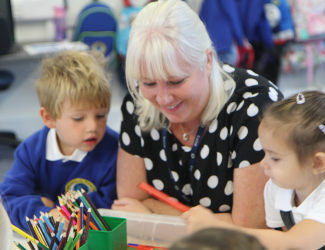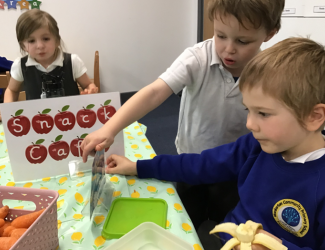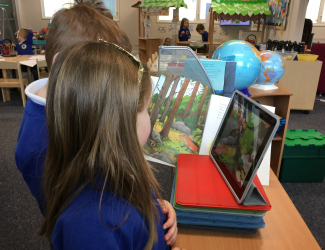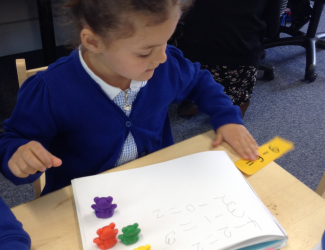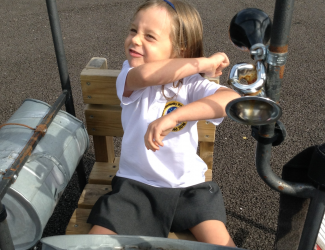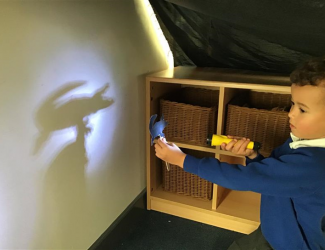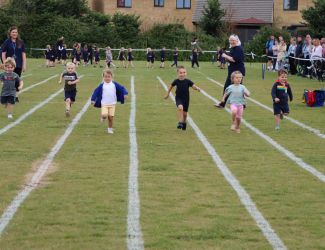Reception Mathematics Curriculum
Children will be taught...
EYFS Development Matters Statements Three to Four Year Olds
- Develop fast recognition of up to 3 objects, without having to count them individually (‘subitising’).
- Recite numbers past 5.
- Say one number for each item in order: 1,2,3,4,5.
- Know that the last number reached when counting a small set of objects tells you how many there are in total (‘cardinal principle’).
- Show ‘finger numbers’ up to 5.
- Link numerals and amounts: for example, showing the right number of objects to match the numeral, up to 5.
- Experiment with their own symbols and marks as well as numerals.
- Solve real world mathematical problems with numbers up to 5.
- Compare quantities using language: ‘more than’, ‘fewer than’.
- Talk about and explore 2D and 3D shapes (for example, circles, rectangles, triangles and cuboids) using informal and mathematical language: ‘sides’, ‘corners’; ‘straight’, ‘flat’, ‘round’.
- Understand position through words alone – for example, “The bag is under the table,” – with no pointing.
- Describe a familiar route.
- Discuss routes and locations, using words like ‘in front of’ and ‘behind’.
- Make comparisons between objects relating to size, length, weight and capacity.
- Select shapes appropriately: flat surfaces for building, a triangular prism for a roof etc.
- Combine shapes to make new ones – an arch, a bigger triangle etc.
- Talk about and identifies the patterns around them. For example: stripes on clothes, designs on rugs and wallpaper. Use informal language like ‘pointy’, ‘spotty’, ‘blobs’ etc.
- Extend and create ABAB patterns – stick, leaf, stick, leaf.
- Notice and correct an error in a repeating pattern.
- Begin to describe a sequence of events, real or fictional, using words such as ‘first’, ‘then...’
EYFS Development Matters Statements Children in Reception
- Read individual letters by saying the sounds for them.
- Blend sounds into words, so that they can read short words made up of known letter-sound correspondences.
- Read some letter groups that each represent one sound and say sounds for them.
- Read a few common exception words matched to the school’s phonic programme.
- Read simple phrases and sentences made up of words with known letter–sound correspondences and, where necessary, a few exception words.
- Re-read these books to build up their confidence in word reading, their fluency and their understanding and enjoyment.
- Form lower-case and capital letters correctly
- Spell words by identifying the sounds and then writing the sound with letter/s.
- Write short sentences with words with known letter-sound correspondences using a capital letter and full stop.
- Re-read what they have written to check that it makes sense.
Early Learning Goals
Number
- Have a deep understanding of number to 10, including the composition of each number.
- Subitise (recognise quantities without counting) up to 5.
- Automatically recall (without reference to rhymes, counting or other aids) number bonds up to 5 (including subtraction facts) and some number bonds to 10, including double facts.
Numerical Patterns
- Verbally count beyond 20, recognising the pattern of the counting system.
- Compare quantities up to 10 in different contexts, recognising when one quantity is greater than, less than or the same as the other quantity.
- Explore and represent patterns within numbers up to 10, including evens and odds, double facts and how quantities can be distributed equally.

